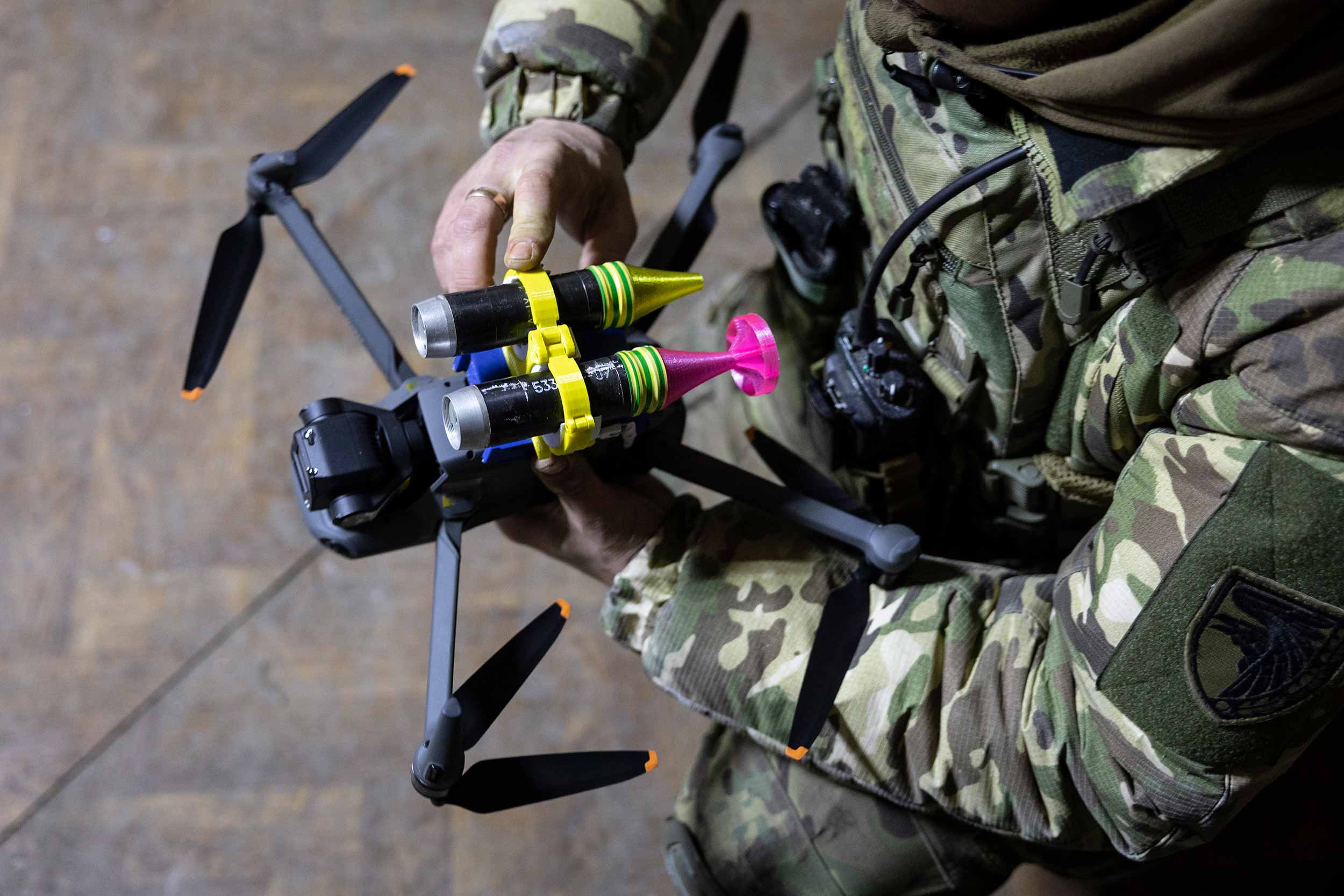Ukraine: The Drone Wars
A rapid innovation boom has been driven by existential needs; but the human toll is enormous.
When Russia invaded Ukraine in February 2022, few predicted that some of the war's most dramatic moments would involve small, buzzing machines that you could once buy at any electronics store. Yet here we are, watching Ukraine use everything from repurposed hobby drones that some people used to film weddings and other family occasions, to sophisticated military UAVs that strike targets deep inside Russia, fundamentally changing how wars are fought.
When you are fighting a war of survival, and your enemy outnumbers you in both military personnel and hardware, you are forced to get creative. Ukraine's drone warfare capabilities have evolved from improvised solutions to a comprehensive strategic weapons system that challenges traditional military paradigms.
The transformation has been remarkable. Early in the war, Ukrainian troops were using off-the-shelf quadcopters, mainly for scouting enemy positions. Now, both the armed forces and Ukraine’s intelligence services (SBU) are launching coordinated attacks on Russian airbases, oil refineries and military installations far from the battlefield. Operation Spiderweb, the June 1, 2025 covert strike in which nearly 120 drones targeted five Russian air bases, was a demonstration of the possible scale of such operations.
This isn't just about dropping bombs anymore; it's about projecting power across vast distances, despite being the smaller military force. The impact on morale extends beyond the battlefield – successful drone strikes against previously “untouchable" targets within Russia have demonstrated Ukrainian capabilities and influenced Russian public opinion about both the trajectory of the war and its costs. These attacks have also brought the war home to ordinary Russians, showing them that their country is not as invulnerable as their leaders claim.

This rapid innovation boom has been driven by existential needs. When your country's survival is on the line, and support from allies are unstable, you find ways to move fast and break new ground. Ukraine's tech sector, which has long been developing rapidly, pivoted from producing apps to weapons. 3D printing has been a game-changer. Ukrainian workshops are now churning out drone parts in hours rather than weeks, allowing for rapid prototyping and customisation. It's like having a weapons factory in every garage.
Online educational platforms host free courses on drone manufacture; a simple online search produces multiple results for well-tested tutorials, making drone production in some cases an evening family activity – for defence and security support and as a tool to support public morale and social cohesion.
But Russia is also rapidly mastering such skills and technology. At the beginning of the full-scale invasion, there were hopes that Russia would run out of weapons, leading to a quick end to the war. This has not materialised. Russia launched a record 5,337 Iranian-made Shahed-type drones against Ukraine in June, according to data from the Ukrainian Air Force. It is now capable of launching in a single night as many drones as it did over an entire month in early summer 2024. This has been helped by sustained technical and production capabilities secured through collaboration with China and Iran; and Russia has also been bypassing western sanctions. A study has showed that Russia is using drones with parts produced not just in China and Taiwan, but also in the US and even in the European Union,
Amid Ukraine’s desperate lack of suitably comprehensive air defence systems, the civilian population across the country lives in constant uncertainty. Every night feels like a gamble; going to bed, you don't know if you will wake in the morning, or if you will be spared but another poor soul fall victim.
Nonetheless, we endure. Children go to school, adults go to work and life continues. In his book, Their Finest Hour, former British prime minister Winston Churchill described how Londoners endured the Blitz during World War II.
“Every night London is bombed, every night it suffers,” he wrote. “But like a great fighter it picks itself up, brushes off the rubble and goes out again into the fight”.
The same can be said about every Ukrainian city suffering yet another attack: every morning it counts its losses, pulls itself together and carries on into the new day.
